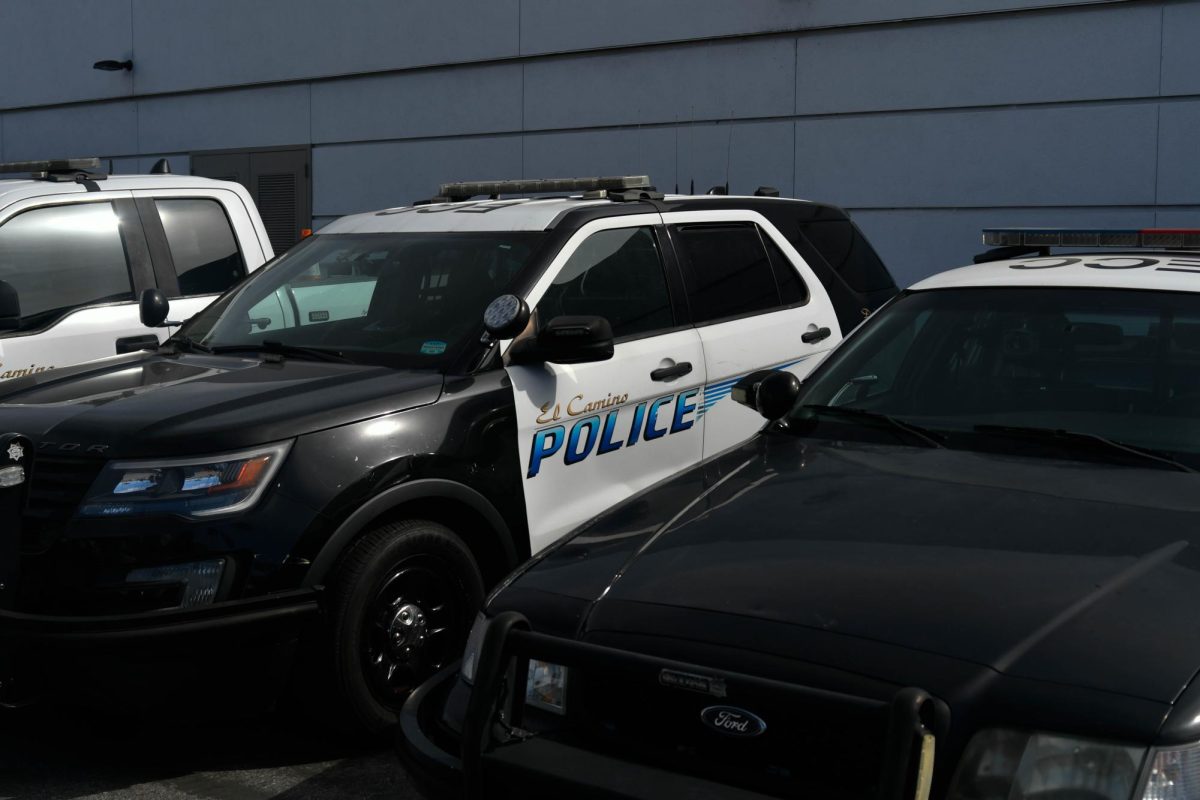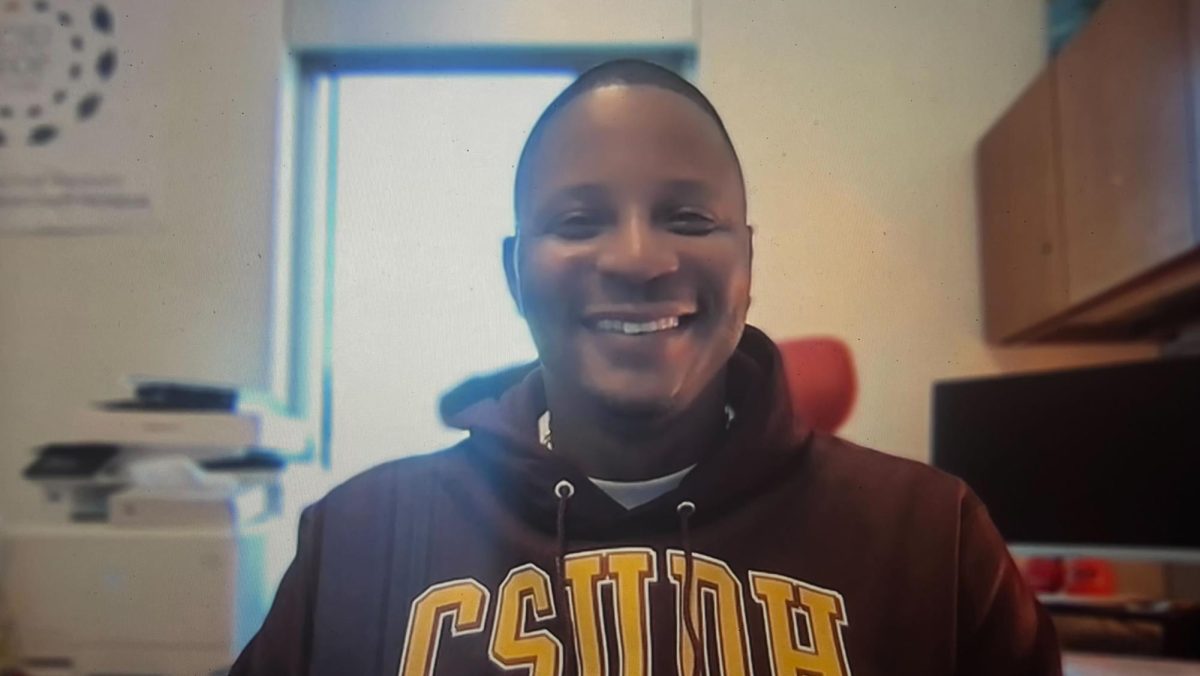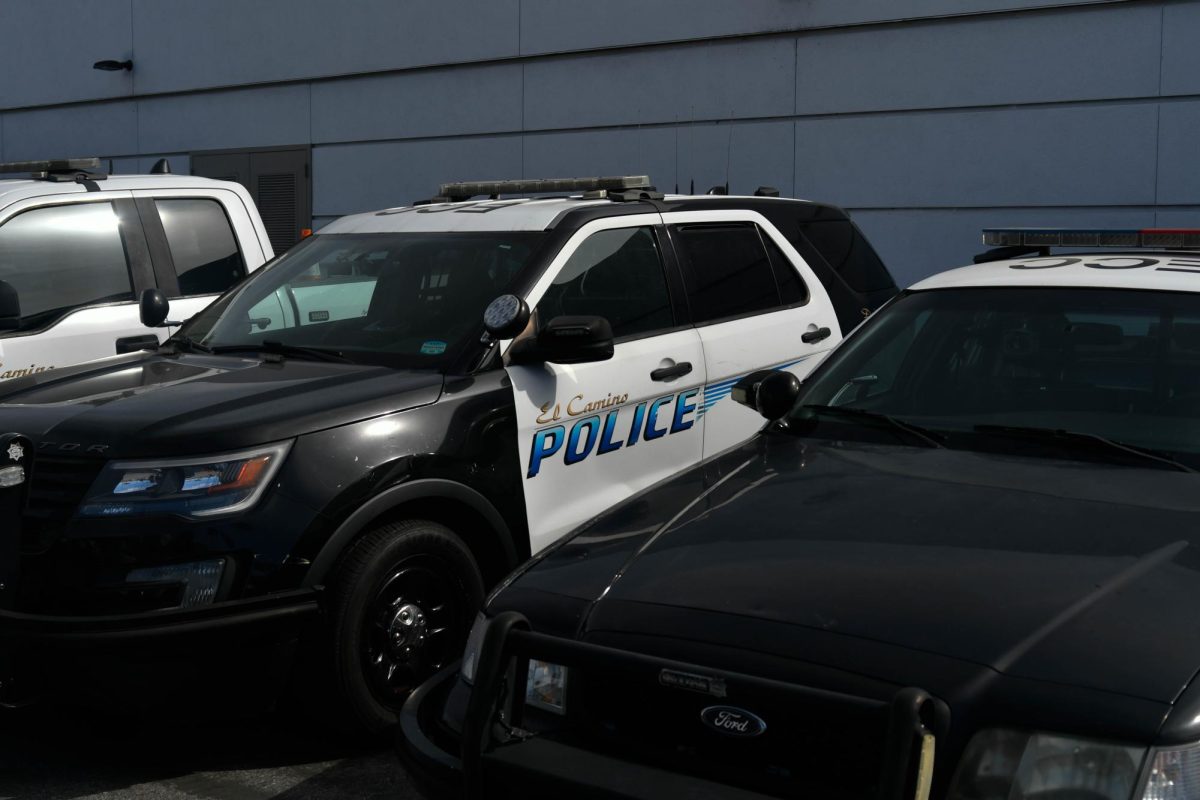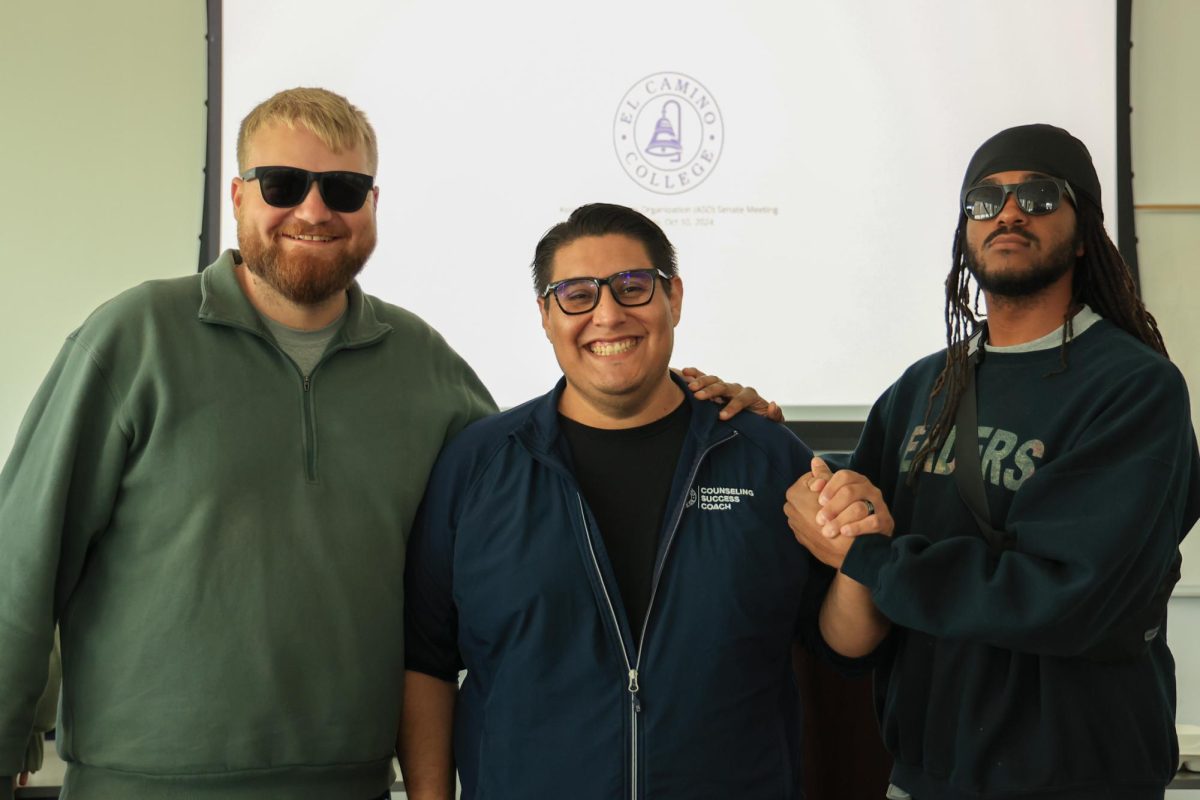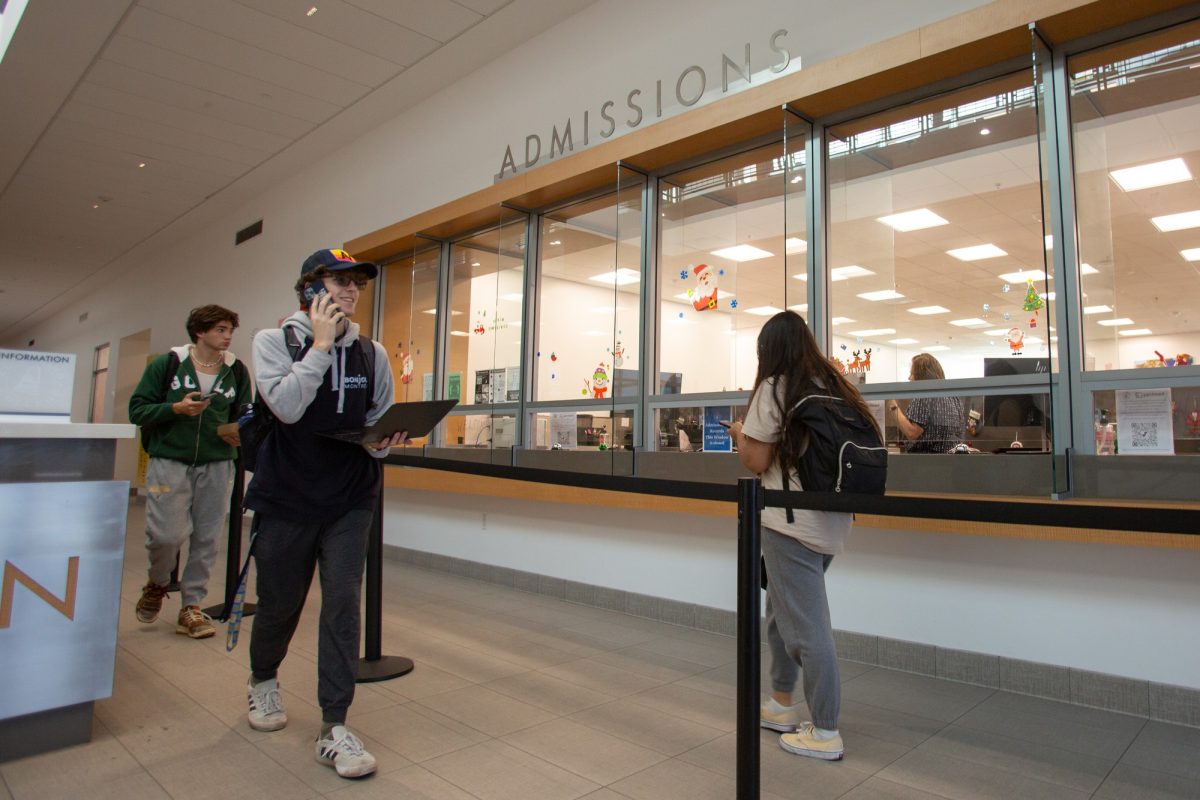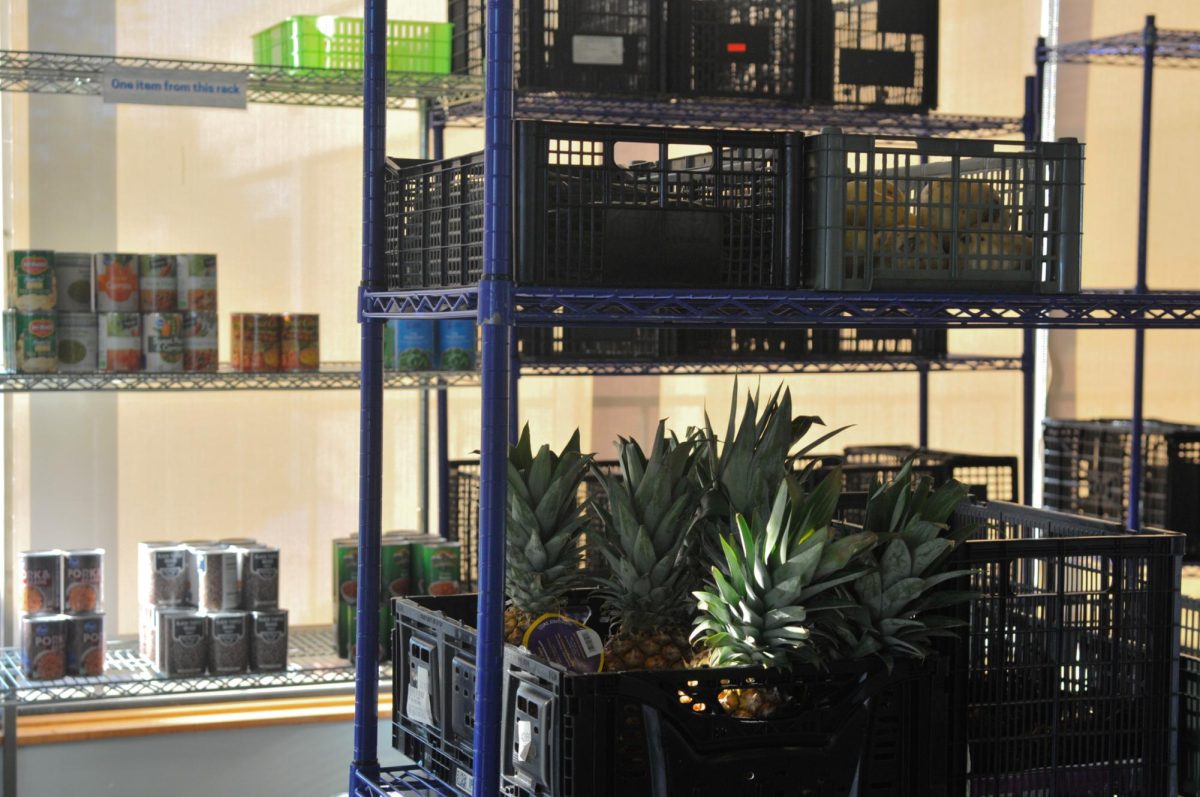Communications major Jacqueline Wyatt sat outside of the Schauerman Library at 10:14 a.m., finishing her homework. It was a regular Thursday morning, but only for one more minute.
At 10:15 a.m., alarms rang across campus, accompanied by flashing lights. The largest earthquake drill in U.S. history, the Great California ShakeOut, had begun.
The drill was put together by organizations such as the U.S. Geological Survey, the Southern California Earthquake Center, the California Emergency Management Agency and others in order to teach people how to be “better prepared for major earthquakes” and “practice how to protect (themselves) when they happen.”
Geology professor Sara Di Fiori is optimistic about the drill.
“It has the potential to wake people up, and encourage them to be prepared. It’s definitely worth disrupting lectures,” Di Fiori said. “The only disadvantage would be if someone didn’t take it seriously.”
That is exactly what Wyatt said she witnessed. Wyatt left the library steps when she heard the alarms, heading for open ground. Not everyone followed suit, however.
“I saw people standing near the buildings, and near big windows,” Wyatt said. “Also, a lot of my friends thought the drill was fun simply because it got them out of class.”
Di Fiori said that one aspect of the drill strategies used was lacking.
“In the event of a big earthquake, the fire department and police aren’t coming. You aren’t standing around outside to wait to be rescued. There would be rubble on the road and an entire city of hospitals, nursing homes and the like that would also need attention,” Di Fiori said.
Di Fiori believes it is imperative for people to be individually prepared.
In some of her classes, she requires her student to put together a homemade earthquake kit for themselves, with basics like emergency supplies of food and water.
Other objects Di Fiori said is good for an emergency kit include a whistle, an extra pair of glasses or other prescription needs, extra pet food if applicable, tennis shoes and a flashlight.
“And don’t forget a can opener!” Di Fiori said.
Another part of being prepared for an earthquake emergency is to learn about geology.
“Any resident of California should understand geology, and how it affects their daily lives,” Di Fiori said. “It has to do with where you want to buy your house, what it means to be near a local fault, and potential dangers an earthquake can pose to you.”
California is riddled with faults, or fractures in the Earth’s surface. The largest fault in California is the San Andreas Fault.
According to geology.com, the San Andreas Fault is actually a tectonic plate boundary between the North American and Pacific plates. The plates slide past each other at roughly the same speed as fingernails grow.
“The San Andreas Fault is long overdue for a major rupture,” Di Fiori said, adding that the rupture would be capable of producing an earthquake of 8.0 on the Richter’s scale.
It is in case of a disaster like that Californians statewide practiced for during the Great California ShakeOut.
And despite the people at EC who didn’t take the drill seriously, Wyatt said that not all was lost.
“As everyone was standing around outside, all the talk was about earthquakes. I think the drill worked in one way or another,” Wyatt said.



